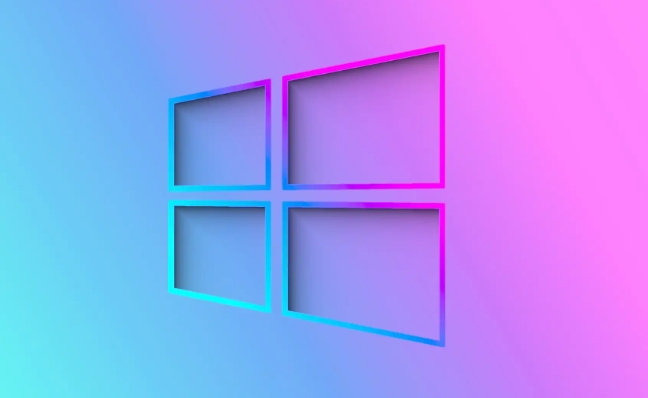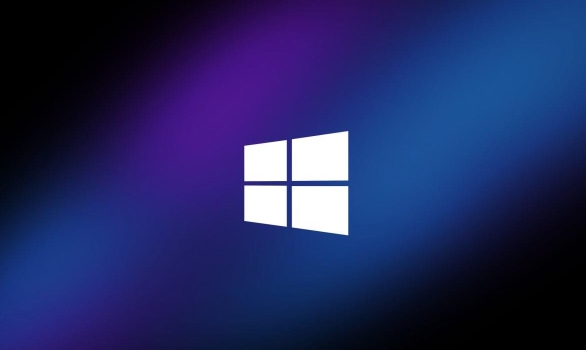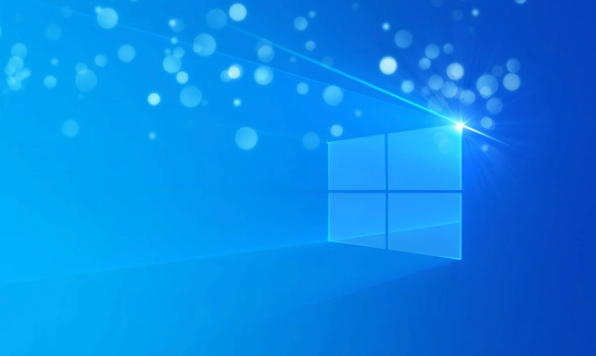To convert the hard disk from MBR to GPT to install Windows 11, you need to back up the data and confirm that the motherboard supports UEFI; 1. Automatic conversion using Windows installation media: Insert the USB disk and boot from USB, press Shift F10 on the installation interface to open the command prompt, enter diskpart, list disk, select disk X, clean, convert gpt commands to complete the conversion, this method will clear all contents of the disk; 2. Lossless conversion of non-system disks in existing Windows: Use AOMEI Partition Assistant Standard and other tools to right-click to convert to GPT disks. It is still recommended to back up the data before operation; after conversion, you need to enter the BIOS to set the boot mode to UEFI Only and turn off Legacy Boot to ensure that the USB disk is also installed with UEFI mode start.

Converting a hard disk from MBR to GPT is one of the key steps in installing Windows 11, because Windows 11 mandates UEFI boot mode and GPT partition tables. If your computer currently uses traditional BIOS and MBR hard disk structures, you need to convert the partition format to successfully install the system.

Preparation: Back up data and confirm hardware support
Before starting the operation, be sure to do the following:

- Backup important data : The conversion process may clear the disk, so copy the files to external storage or cloud disk in advance.
- Confirm that the motherboard supports UEFI : Most motherboards after 2015 support UEFI, and you can check the model on the motherboard official website to confirm.
- Check the current disk status : Open the Disk Management tool and right-click your system disk → Properties → Volume → Check if it is MBR or GPT.
If you have confirmed that you need to convert, you can choose one of the following two methods to perform the conversion.
Method 1: Automatic conversion using Windows installation media (recommended)
This is the easiest and safest way for users who are planning to install Windows 11 completely.

- Insert the created Windows 11 installation USB drive and restart the computer.
- Enter the BIOS to set the startup sequence and start from USB first.
- After starting the installation process, select Custom: Install Windows only (Advanced) in the Installation Type interface.
- If it is currently an MBR partition, you will be prompted that you cannot install Windows 11 on this disk.
- Press and hold
Shift F10to open the command prompt.
Enter the following commands in sequence on the command line:
diskpart list disk select disk X # X is the disk number of the system you want to install convert gpt exit
Then close the command window, refresh the disk list and see the installation options.
Note: This method will clear all content on the disk and be sure to back up the information in advance.
Method 2: Lossless conversion in existing Windows (suitable for non-system disks)
If you just want to convert a non-system disk from MBR to GPT and don't want to lose data, you can use third-party tools to achieve lossless conversion.
- Recommended tools: AOMEI Partition Assistant Standard (free)
- Supported operations:
- Right-click the target disk → “Convert to GPT disk”
- Does not affect existing data, but only applies to non-system disks
However, it should be noted that this type of tool is not suitable for running system disks, and it is best to make a complete backup before operation just in case.
Don't forget to set UEFI startup after the conversion is completed
After completing the partition conversion, you also need to make sure that the motherboard is started from UEFI mode:
- Restart and enter the BIOS setting interface (usually press Del, F2 or F12)
- Change boot mode to UEFI Only (some motherboards are called "Boot Mode")
- Turn off Legacy Boot (legacy boot support)
After saving the settings, boot again from the installation USB drive, you can install Windows 11 normally.
Basically that's it. The whole process is not complicated, but there are several key points that are easy to ignore: such as whether the disk is really needed to be cleared, whether the BIOS settings are switched correctly, and whether the installation of the USB flash drive itself is also started in UEFI. Just pay attention to these details, there should be no problem when converting MBR to GPT.
The above is the detailed content of How to convert MBR to GPT for Windows 11 installation. For more information, please follow other related articles on the PHP Chinese website!

Hot AI Tools

Undress AI Tool
Undress images for free

Undresser.AI Undress
AI-powered app for creating realistic nude photos

AI Clothes Remover
Online AI tool for removing clothes from photos.

Clothoff.io
AI clothes remover

Video Face Swap
Swap faces in any video effortlessly with our completely free AI face swap tool!

Hot Article

Hot Tools

Notepad++7.3.1
Easy-to-use and free code editor

SublimeText3 Chinese version
Chinese version, very easy to use

Zend Studio 13.0.1
Powerful PHP integrated development environment

Dreamweaver CS6
Visual web development tools

SublimeText3 Mac version
God-level code editing software (SublimeText3)

Hot Topics
 macOS installer is damaged and can't be used
Jun 28, 2025 am 12:01 AM
macOS installer is damaged and can't be used
Jun 28, 2025 am 12:01 AM
When you encounter the prompt "macOS installer is corrupted and cannot be used", the problem is usually not that the installation package itself is corrupted, but that there is an error in the verification mechanism or storage method. 1. Re-download the macOS installer, and priority is obtained from Apple's official channels to ensure integrity; 2. Turn off the installation verification in SIP, enter the csrutildisable command through the terminal and temporarily close the verification and restart the installation; 3. Check whether the USB boot disk is made correctly. It is recommended to use the createinstallmedia command and ensure that the USB disk format is MacOS extension; 4. Correct the time and date settings, adjust the time through the date command in the recovery mode to avoid misjudgment of the certificate expiration. Most of them are after completing the above steps.
 How to partition hard drive for Windows installation
Jun 27, 2025 pm 02:27 PM
How to partition hard drive for Windows installation
Jun 27, 2025 pm 02:27 PM
Partitioning is crucial to installing the system. Good partitioning can improve the system operation efficiency and data management convenience. First of all, you need to know that there are up to 4 main partitions, and logical partitions are required if there are more than UEFI. The new computer recommends that the GPT format be started with UEFI, and the old machine uses MBR; the system disk is reserved at least 60GB. It is recommended that home or office users be divided into 2 to 3 zones: system disk (60 to 100GB for disk C), data disk (remaining space for disk D), optional backup/tool ??disk (approximately 50GB for disk E), dual systems require additional partitions. During installation, operate the partition on the "Custom Installation" page, and be careful to delete the old system partition to avoid confusion. In terms of details, the default NTFS format is maintained, the SSD is turned on AHCI mode, partition first and then install the system, and disk management can be used to adjust the partition size but avoid it.
 macOS installer won't accept my password
Jun 29, 2025 am 12:14 AM
macOS installer won't accept my password
Jun 29, 2025 am 12:14 AM
The answer to the question is that the password error prompt may be caused by keyboard layout, case recognition, or installer source. The macOS installation interface uses an American English keyboard by default. The input of non-English keyboards may not match. It is recommended to switch layouts or avoid special characters; the password is case-sensitive, and it is recommended to check the CapsLock status or try all lowercase; if the installer comes from another Mac, you need to enter the Mac password to make the installer; you can also try to re-download the installer through recovery mode, confirm the administrator account identity, or format the disk with disk tools first.
 How to dual boot Windows 11 and Ubuntu
Jul 01, 2025 am 12:08 AM
How to dual boot Windows 11 and Ubuntu
Jul 01, 2025 am 12:08 AM
When installing dual systems, you need to pay attention to partitioning, installation order and BIOS settings. 1. Partition preparation: Use disk management tools to compress at least 25GB (50GB or more) of unallocated space to Ubuntu without formatting; 2. Make a boot U disk: Use Rufus to write Ubuntu ISO to at least 8GB U disk; 3. BIOS settings: Restart and enter the BIOS (usually press F2, Del or Esc), turn off SecureBoot, and set the U disk as the first boot item; 4. Install Ubuntu: Select "Somethingelse" custom partition, create a new ext4 mount point/ and occupy the remaining space, and build a swap partition equal to the memory size, boot and add
 What is the difference between macOS Recovery and Internet Recovery?
Jul 02, 2025 am 12:24 AM
What is the difference between macOS Recovery and Internet Recovery?
Jul 02, 2025 am 12:24 AM
macOSRecoveryisabuilt-inrecoverysystemonahiddenpartitionofyourMac’sstartupdisk,providingtoolslikeDiskUtility,Terminal,andmacOSreinstallation.1.Itloadsquicklyfromlocalstorage.2.Requiresafunctioninginternaldrive.3.ToolsincludereinstallingmacOS,repairin
 Can I use my Windows 7 product key to activate a new Windows 10 installation
Jul 02, 2025 am 12:15 AM
Can I use my Windows 7 product key to activate a new Windows 10 installation
Jul 02, 2025 am 12:15 AM
No,youcannotdirectlyuseaWindows7productkeytoactivateWindows10.1.Windowsproductkeysareversion-specific,soaWindows7keyonlyworksforWindows7.2.IfyourPCwasupgradedfromWindows7toWindows10beforesupportended,itmayhaveadigitallicenselinkedtothehardware,allowi
 How to install Windows 10 in VirtualBox
Jun 30, 2025 am 12:02 AM
How to install Windows 10 in VirtualBox
Jun 30, 2025 am 12:02 AM
The key steps to install Windows 10 to VirtualBox are as follows: 1. Prepare VirtualBox, Windows 10 ISO images and system resources; 2. Create a virtual machine and set the name, type, memory and virtual hard disk; 3. Mount the ISO file and start the installation process; 4. After the installation is completed, the enhancement function expansion package is inserted to improve performance and operating experience. The entire process requires attention to hardware compatibility, BIOS settings and installation of necessary dependencies to ensure smooth installation.
 Windows 10 installation stuck on logo
Jul 06, 2025 am 12:01 AM
Windows 10 installation stuck on logo
Jul 06, 2025 am 12:01 AM
When booting the computer and logging in the Windows 10Logo interface is usually not damaged by hardware, but rather an error in system file loading. 1. Wait for 15 to 30 minutes first to confirm whether it is "fake death". If there is no progress, force restart; 2. Force shut down three times to enter the recovery environment, try to start repair or enter safe mode to troubleshoot driver and software conflicts; 3. Check the hard disk bad channel, clean the memory gold fingers and replace the slot to test the hardware problems; 4. Finally, you can try to reset the computer or install the system in a brand new way to solve it, and give priority to using the official website pure ISO mirror.






